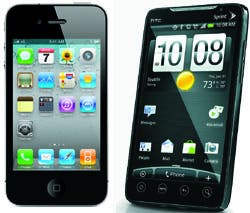Smart phones and tablets: How to achieve platform independence and industrial-grade reliability
Clearly one of the biggest trends to rock the world of consumer electronics is smart phones such as Apple's iPhone and Google Android phones, and more recently, tablet devices such as iPad and a forthcoming spate of Android-powered tablets.
The combination of a paradigm-changing, multi-touch, highly graphical user interface combined with third-party applications ("apps") has led to explosive, widespread adoption of these devices.
Industrial automation vendors have begun embracing these platforms to satisfy high expectations from users who want to be able to use these devices as a pocket HMI.
But there two problems that challenge industrial automation users and suppliers:
1. Apps on these devices are typically not designed with security, reliability and performance foremost in mind. The low barrier to entry to develop an app has led to extremely low app prices, intense speed-to-market pressures, and a multiplicity of competition. The result: apps that are buggy and subject to constant updates. Consumers accept this because their expectations are so low due to the wide choice and low (or no) price. But in the world of industrial automation, this paradigm won't fly. Expectations remain sky high where security, reliability and performance are concerned.
2. With the smart phone and tablet market divided by platform (led by Apple's iOS and Google's Android, but also including Blackberry, Microsoft), it's reminiscent of bus wars and proprietary platforms all over again. App builders must either choose one platform over all others, or devote resources to building and maintaining the same app across multiple platforms.
OPC UA to the rescue
Two trends with regard to OPC Unified Architecture (OPC UA) change all that, opening the door to use of smart phones and tablet devices for industrial automation applications that are secure and reliable. First developed in 2004, OPC UA is a secure, reliable, platform-independent solution for providing deterministic interoperability. Reliability, security and performance are built right in. (A quick history lesson: The original OPC specification in the 1990's was Microsoft-centric; the shift to OPC UA eliminated the reliance on the Microsoft COM/DCOM platforms.)
Industrial automation suppliers can now build smart phone and tablet apps using OPC UA services, without worrying about developing and maintaining iOS- or Android-specific versions. A function library for the iOS and Android devices only needs to be written once. OPC Foundation has released the necessary specifications that enable libraries for multiple platforms to be developed, and many OPC toolkit vendors have already done so. With libraries in place, any vendor can write applications using the OPC UA services, and OPC UA will port the functionality to each platform, essentially hiding the details of the hardware platform from the application developer.
Using OPC UA, for example, it's possible to receive and acknowledge alarms on an iPhone or Android phone directly from the industrial environment. There's also an infrastructure in place to make sure the alarm is actually received, with redundancy support in place to facilitate alternative actions to be initiated if the alarm is not acknowledged from the smart phone.
Industrial automation suppliers get the best of both worlds--they only have to write apps once, and both suppliers and users automatically get an architecture that inherently supports reliability, security and performance.
The OPC Unified Architecture is scalable and has been deployed by a significant number of vendors already.
OPC Foundation provides the specifications, technology, certification process to enable its members to easily bring products to market that truly provide best-of-breed, multivendor, multiplatform, secure, reliable interoperability.
For more information, visit www.opcfoundation.org.
About the Author
Thomas Burke
President

Leaders relevant to this article:
